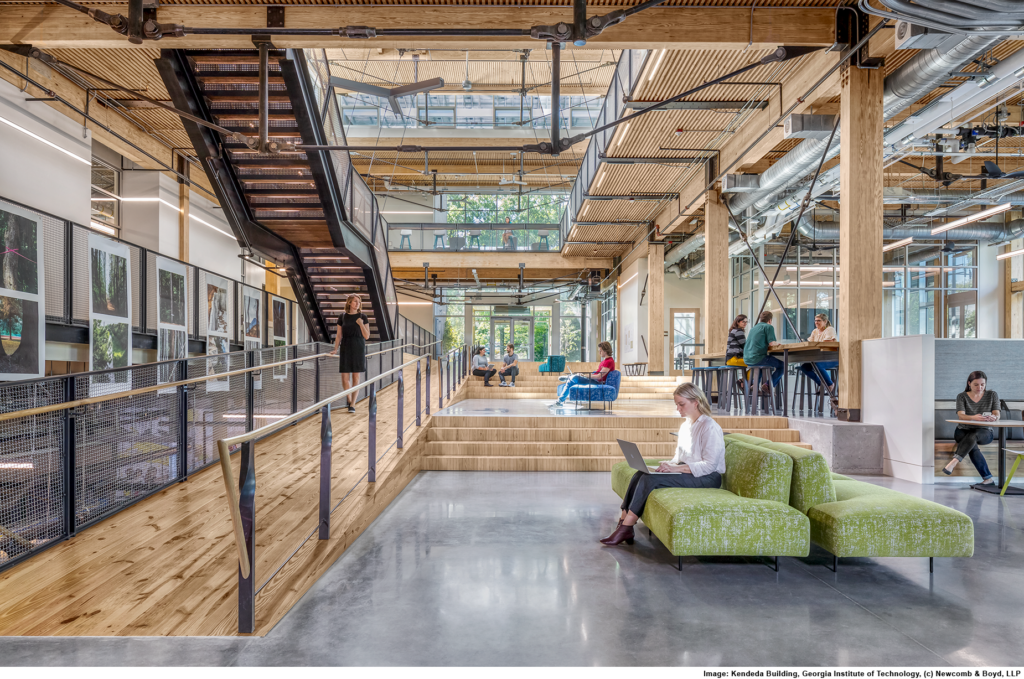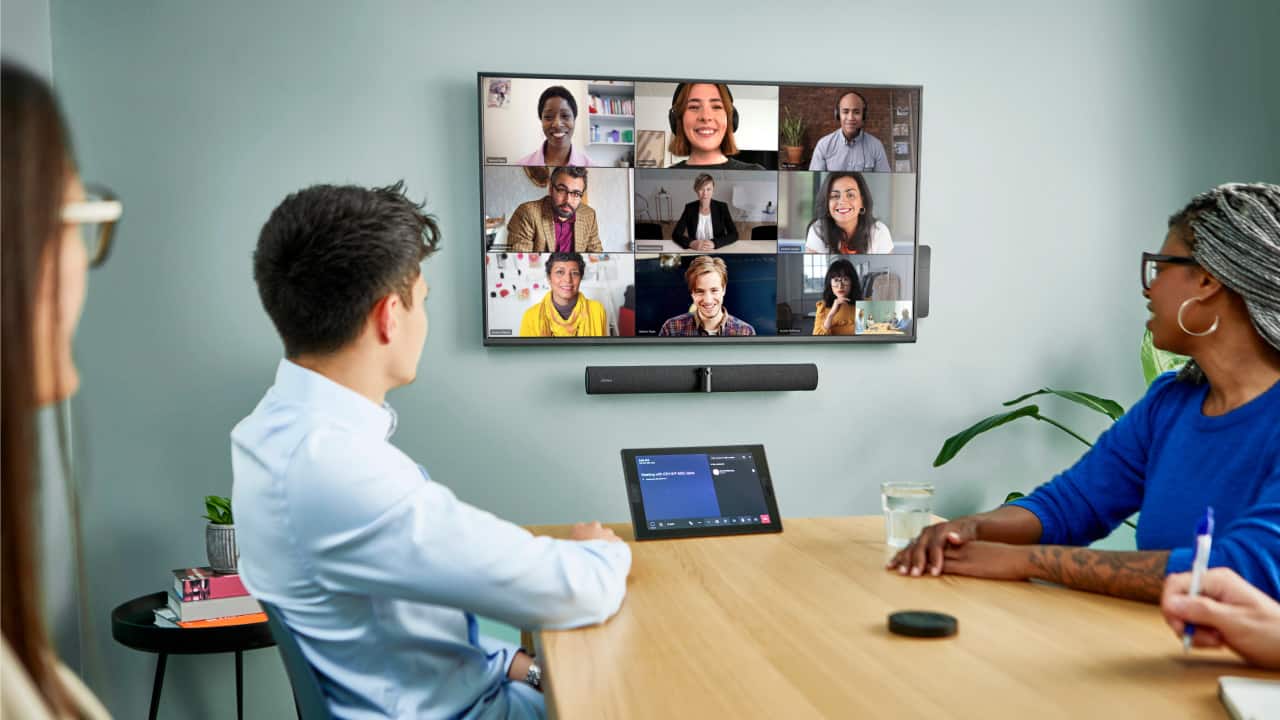
Jul 1, 2025
Beyond LEED: Delivering AV and IT for the World’s Greenest Buildings
View moreNov 15 - 2023

Supporting employees who split their time between the office and remote work requires a thoughtful approach to ensure they have collaboration tools that support inclusion. Technology upgrades are a large part of the equation, but we’ll explore how different preferences and locations drive the need for a more holistic approach.
As more of us head back to the office a few days a week or more, consider if your office is ready to accommodate effective hybrid meetings. It may be time for a collaboration technology refresh. When meeting room or home office collaboration tools upgrades, put yourself in your employee’s shoes. Consider how the technology you choose supports seamless transitions as teams move between working in the office, at home, and on the go.
So how do we do that? Surveys and research to gauge employee feedback are essential. And Jabra has offered some key insights to jumpstart your planning. Over the past three years, Jabra has tracked employee sentiment and work behaviors through its Hybrid Ways of Working Global Report. June 2023 results are in, and one thing remains clear: inclusion is a major concern for employees.
And inclusion boosts productivity since the employees are more engaged with their coworkers. However, consider that not everyone connects the same way. Jabra’s report also indicates that one-third of employees feel more comfortable expressing their ideas on video, while a quarter prefer in-person sessions. And we need to accommodate everyone.
Inclusion is not just about adding technology. Instead, consider a holistic approach to ensure your teams feel included in every meeting, chat session, ad-hoc discussion, and voice call.
Jabra’s Joshua Blalock put it this way, “Let’s not think about just this room or just the phones. Let’s think about how you’re going to communicate and collaborate effectively. Consider every person, the technology they need, and every situation.”
Jabra offers further insights on hybrid work, including:
Professional-grade audio and video are a must for productive hybrid meetings. Today, people join meetings from just about anywhere. Consider how technology supports inclusion in different spaces such as meeting rooms, office desks, home offices, hotel rooms, airports, coffee shops, and co-working areas. We need to equip everyone with a suite of collaboration tools that works everywhere to ensure inclusion in all meetings.
High-quality video and audio are equally important to make everyone feel included, and that’s been Jabra’s approach to hybrid work. “Jabra saw the importance of ensuring the rooms were equipped so everybody was equally represented with good quality video. But they came from a place of having premium audio solutions,” Blaylock said. Let’s look at audio and video needs in different scenarios.
Today’s meeting spaces are evolving. At AVI-SPL, we hear that customers want smaller spaces, a lot more of them, and they all must be video-enabled.
For video, gone are the long views of tables with a few people sitting at the far end. Hybrid work demands we see each individual in detail. Video must enable participants to make eye contact and see each other’s facial expressions, including smiles, frowns, raised eyebrows, and other subtle cues. These expressions convey emotions and reactions that words alone may not capture.
Hearing every word and being heard is important, too, of course. Seeing and hearing clearly delivers an immersive experience that helps team members look professional and build relationships and trust no matter where they work. In fact, according to Jabra’s survey, “64% of employees say that being able to hear and see colleagues makes it easier to trust them.”
Are your meeting rooms hybrid-work ready? The Jabra report indicated that a mere 15% of employees said that all of their office meeting rooms are equipped with video cameras to support online meetings.
Jabra’s PanaCast 50 Room System uses AI-enabled video and audio streams to deliver a more natural and inclusive collaboration experience. And with Jabra’s proprietary intelligent algorithms, the tone and nuances of the meeting are captured to keep hybrid teams connected and engaged from anywhere.
If you prefer an Android-based solution, an all-in-one option like Jabra’s PanaCast 50 Video Bar System can help you upgrade rooms quickly and provide intelligent video options that ensure everyone feels included.
While meeting room use is on the rise, team members still join work sessions from personal workplaces at home or in the office. Audio quality from PC mics and speakers doesn’t offer an optimal inclusive experience. For private spaces such as closed home offices or private corporate offices, a hands-free speakerphone enables natural conversations.
Open offices offer different challenges. Speakerphones, onboard mics, and speakers aren’t options for employees in shared spaces or cubicles prone to noise and distractions. Providing noise-canceling headsets can significantly reduce ambient background noise, making it easier for employees to concentrate on their work and hear and be heard in an online meeting.
We can’t forget about meetings everyone attends while on the go. It could be at an airport, during an Uber ride, or in a hotel room. And while conditions are not ideal, employees on the go want an equal footing with everyone in the meeting. Some employees simply opt to use personal earbuds. I am challenged with getting earbuds to stay in my ears, and I fear losing them. But some options offer a better fit along with professional-grade audio.
Jabra Elite 10 earbuds offer a unique solution with oval EarGels designed to provide a perfect fit and feature Jabra Advanced Active Noise Cancellation™. And for those who prefer headsets while traveling, look for foldable headsets such as Jabra Evolve2 65 Flex. They fold up into a carrying case that makes them perfect for traveling or taking calls in public spaces.
The key to making hybrid work employees feel connected is to prioritize inclusivity, communication, and relationship-building within your team or organization. Before you upgrade your collaboration technology, take the time to research your employee’s unique needs and preferences of your workforce.
Contact AVI-SPL to upgrade your meeting rooms and remote workspaces with Jabra collaboration solutions. To get started now, ask about turnkey solutions like PanaCast Bundles.